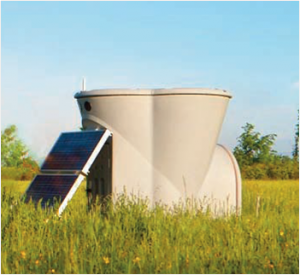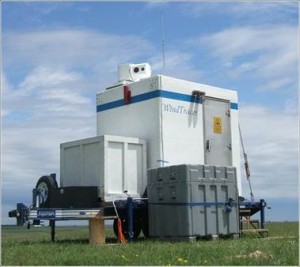Recent advances in observing technology offer the promise of a revolution in our understanding of the planetary boundary layer. Traditional methods of sampling the boundary layer have included instrumented tall towers (usually associated with research applications) and balloon-launched radiosondes. However, the cost and expense of these sampling methods have limited the frequency of their use, and therefore their ability to characterize the boundary layer over broad areas. Likewise, satellite-based profilers are extremely expensive and have their own limitations.
 |
 |
The introduction of Sonic Detection and Ranging (SODAR) and Light Detection and Ranging (LIDAR) vertical profilers in recent years offers the opportunity to dramatically increase the number of high quality boundary layer observations at a very reasonable cost. Both technologies offer a continuous real time vertical sample of the atmosphere above the sensor, reaching up to 200 meters or more in altitude and offering vertical resolutions of 10 meters or less. Even more recently, the introduction of Three Dimensional Scanning LIDAR by several providers holds the promise to revolutionize sensing, by providing a several order-of-magnitude increase in the amounts of data that can be collected by a single sensor system.
Building on its 20+ years of engineering and technical expertise, WeatherFlow has been moving aggressively to take full advantage of these capabilities. It has partnered with government, university, and industry researchers on a variety of funding proposals to investigate the full spectrum of technologies. Projects like these will enable these collaborative teams to tackle some of the most challenging boundary layer problems – including both resource assessment and real time monitoring in support of terrestrial and offshore wind energy, dispersion of plumes from terrorist attacks or industrial accidents, and improved real-time monitoring of near-surface conditions in support of aviation and other weather-sensitive industries. All of these technologies are also planned for inclusion in the WeatherFlow Wind Energy Mesonet.